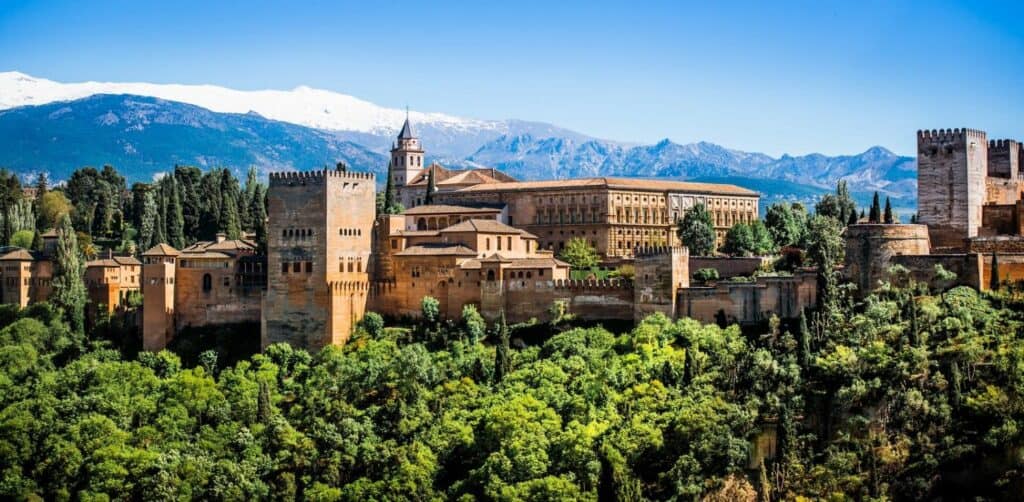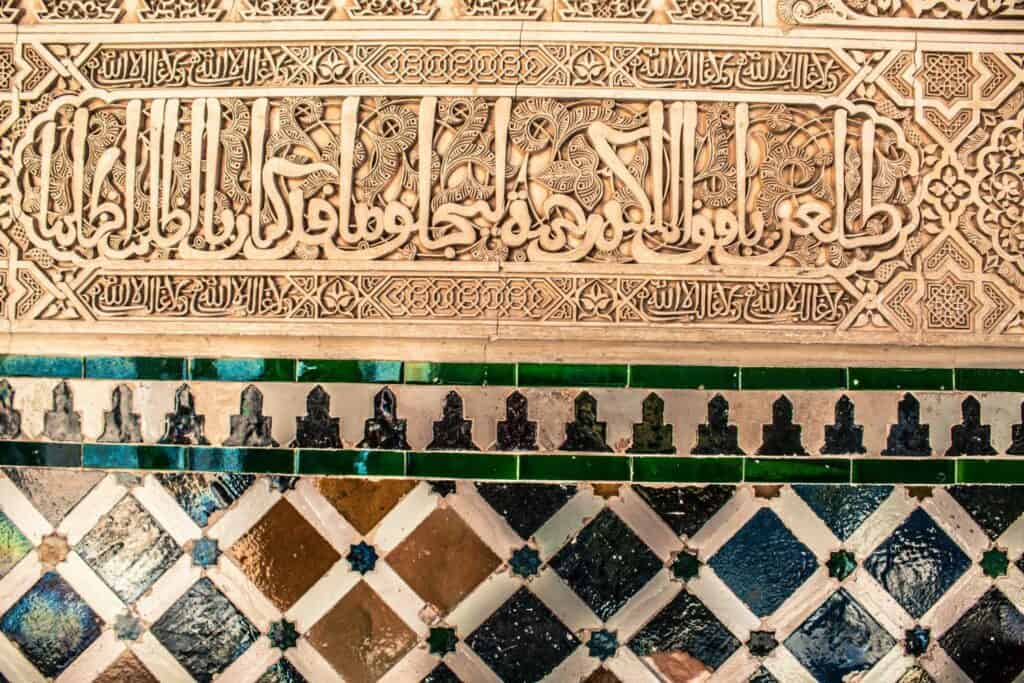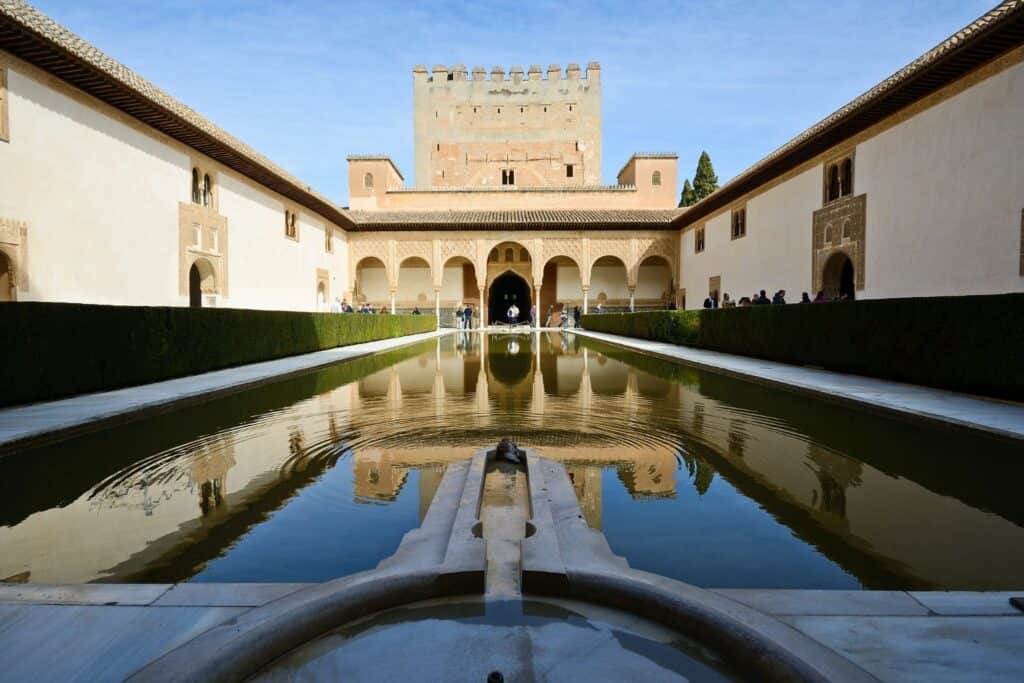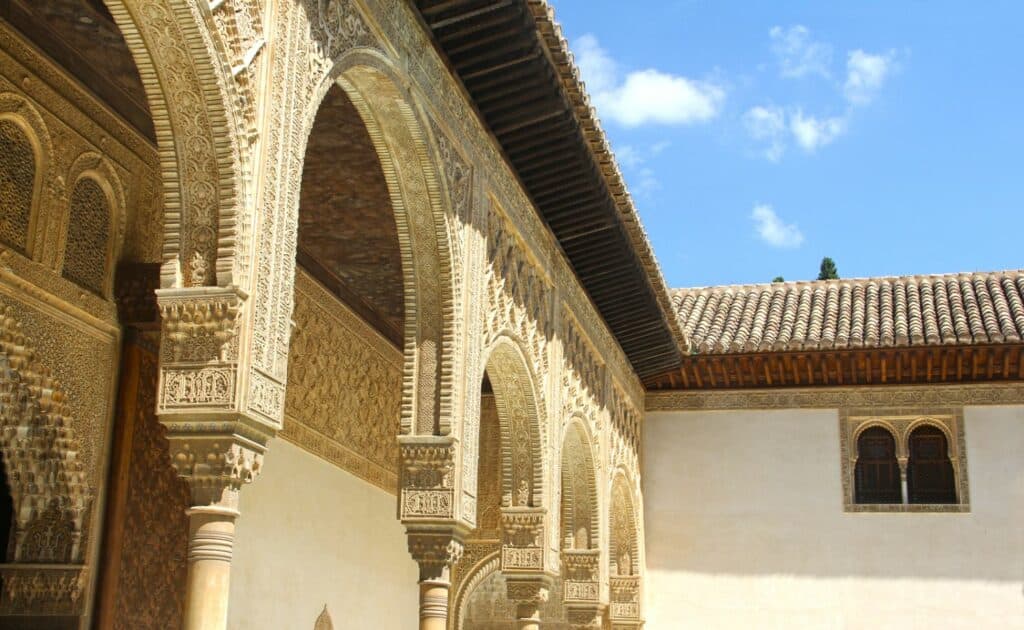Granada in One Day: A Guide to the Best of the City, Alhambra

Updated On: November 09, 2023 by Marwa Abdel Moniem
A short trip away from your hectic schedule and daily routine is a good idea, especially when you have many options on the table. We are talking about cities where you could squeeze it all into the weekend or just one day, like Granada in Spain!
This will be a different vacation, where you will get to know about the history of Spain, culture, and, at the same time, enjoy the natural beauty. Granada, this autonomous community of Andalusia, will not fail you. This article will help you explore this small city before packing your bag.
The History of Granada
Granada, a tiny city in the south of Spain, can be spotted on the map right at the foot of the Sierra Nevada. The city got its name from the Zirid Dynasty rulers, who called it Medina Garanta in the 11th century. The origin of this name is believed to either have originated from the Latin word for pomegranate, “granatum”, or from the Arabic “gar-anat”, which roughly translates into the city of pilgrims.
Granada witnessed the golden era of Mohammed ibn Yusuf ibn Nasr in the 13th century. Founded in 1230, the Emirate of Granada was the seat of the Nasrid rule, the last state of the Islamic Moors in the Iberian Peninsula. Granada’s Muslim identity, however, was shaped long before that, in 711. It remained a Muslim kingdom for more than 780 years until 1492.
In January 1492, Granada fell to the Catholic Monarchs who entered the Alhambra, the greatest-ever Moorish palace. Granada was transformed into a Christian city in the 16th century. Today, it is one of the most visited tourist areas in Spain.
Boasting a delightful mix of Moorish and Christian architecture and culture, Granada is an important historical city that should be on your sightseeing agenda. The highlights of Granada include the incredible Alhambra, with its Nasrid Palaces and Generalife Gardens.
Granada Has the Wonderful Alhambra
Welcome to Alhambra! The “red castle” in Arabic is the crown jewel of Granada and the finest example of Muslim architecture in Spain. One of the most significant remnants of Islamic rule in the Iberian Peninsula, Alhambra was designated as a World Heritage Site by UNESCO in 1984. It was also nominated as one of the World’s New Seven Wonders.
Sitting on a plateau overlooking the beautiful Andalusian city of Granada, the Alhambra was built between 1238 and 1358 during the Nasrid era. It is a palace and fortress complex that stands out as a feat of Islamic architecture.
It was called Alhambra because of the red colour of the walls, or so it is believed. Perched up on top of al Sabika Hill, Alhambra stands in front of the neighbourhoods of Albaicin (an old Arab quarter) and Alcazaba.
The Design of Alhambra

A quadrangular design had been laid out, bringing all palaces of Alhambra together in a central courtyard. Featuring an irrigation system of its own, Alhambra is a living manifestation of Muslims’ prosperity during the reign of the Nasrid Dynasty. Alhambra also has numerous bathhouses and two towers.
Traditional Islamic details can be seen on the walls, columns, and arches. Poems and verses of the Holy Quran are inscribed on the walls adding to its beauty and spirituality. Stunning frescoes are also part of Alhambra’s architecture, as well as the reflecting pools and fountains. Painted tiles are connected in symmetrical patterns, and the corners adhere to mathematical principles.
The decorations at Alhambra are made of carved plaster. The arches and columns are panelled with tile mosaics. Such splendid decorations are ascribed to Yusuf I, who died in 1354.
The Hall of the Ambassadors

It was here that the throne was kept and where the sultan held grand receptions. The Hall of the Ambassadors is square-shaped, and its walls have three arches, each leading to three small rooms.
This hall has many inscriptions on the walls praising Allah or the sultan. The walls are covered with verses from poems or texts from the Holy Quran. The coat of arms is made of glazed tiles from the 16th century. It is the most majestic hall in the palace.
The Court of Myrtles

A goldfish pool surrounded by green myrtle bushes is in the centre of this court, which provides cooling for the interior parts of the palace. The court also has a large door that features geometric designs and opens onto this rectangular pool made of marble.
Marble pillars support Moorish arches found in the terrace with a sloping roof running around the outer edge of the court. The Court of Myrtles got its name from the green myrtle bushes that grow on the sides of the pool.
The Nasrid Palaces
This monumental complex is the crown jewel of the Alhambra. It has three palaces: the Comares Palace (the most beautiful part and the official residence of the king), the Palace of the Lions (the private rooms of the royal family), and the Partal Palace (the oldest of all palaces).
It also houses the Mexuar, the meeting place of the Council of Ministers. Those palaces are the most visited in Alhambra.
The Generalife Gardens
A villa with gardens east of the Alhambra complex, the Generalife was designed as a resting place and a private retreat from official affairs for the kings of Granada.
This leisure place was built in the 13th century and was redecorated in 1319 by King Abul Walid Ismail. It was also used as a farm for agricultural purposes. The Generalife is one of the most preserved Moorish gardens still intact. Its name roughly translates into “garden of paradise”.
The Alcazaba
Standing at the western tip of Sabika Hill, the Alcazaba is the oldest part of the current Alhambra complex and serves as a fortress. It was built by Mohammed I on the site of an earlier fort of the Zirid Kingdom.
Its name is the transliteration of the Arabic term “Al Qasabah”, which means the citadel. The Alcazaba was the residence of Mohammed II.
A Trip to the Alhambra Complex

An Alhambra-General-Day-Tour ticket is all you need to visit the Nasrid Palaces in the morning. If you think of arriving later in the day, you can purchase the Nasrid-Palaces-Night-Visit ticket. However, booking your tickets at least one month before the visit is highly recommended to ensure you reserve the most convenient date and time.
Besides the Nasrid Palaces, the ticket includes visits to the Alcazaba and the Generalife Gardens. Access to the Alhambra complex in Granada is also charged, and only a limited number of visitors are allowed daily. A complete visit may last for approximately three hours.
The Alhambra is open all days of the week except 25 December and 1 January of every year. It is open to visitors from 8:30 a.m. to 8:00 p.m., giving them enough time to explore the complex.
Dos and Don’ts at the Alhambra
If you are planning to visit the Alhambra complex, you should consider some instructions. We will let you in on what to do and what not to do while in Alhambra. So, keep reading!
First, you must have your passport or ID (which you used to purchase the ticket) when visiting the Alhambra complex.
You might not like that, but photography is prohibited at the Alhambra complex. However, if you wish to do so, you have to get permission first. It is also unacceptable for visitors to touch the decorations on the walls or lean on the columns. Backpacks, large bags, and baby strollers should stay in the coatroom set for that purpose.
Food and drink are allowed into the Alhambra, but only in designated areas. For having a full-course meal after the magical —but tiring— tour, we recommend visiting the Parador. To know more about the visiting regulations, you can check the official website of Alhambra.
The Parador

An oasis in the heart of the Alhambra, the Parador welcomes the complex’s visitors to have their dinner at the restaurant of the Nasrid Palace, now turned into a four-star hotel. If that’s not what you are asking for, you can relax at the vine-shaded garden café and order your favourite drink and delicious tapas (which are sometimes served for free with the drinks).
The Alhambra is Granada’s Best Attraction
To tell you that Alhambra is one of the top tourist attractions in all of Spain, and not only in Granada, is not an exaggeration. This spot brings more than 2.5 million tourists to Granada annually, coming to the Andalusian city to see the Alhambra.
If you are a history buff, then this is a place you should take advantage of. It will be a good chance for you to explore various UNESCO world heritage sites in this very walkable city. Speaking of walking, you won’t return home empty-handed as you will inevitably come across Gran Via de Colon—the main shopping avenue in Granada—during your visit. Now, you have good shopping promised as well. There is no think-twice; Granada is a fantastic destination for short stays. So what are you waiting for?






